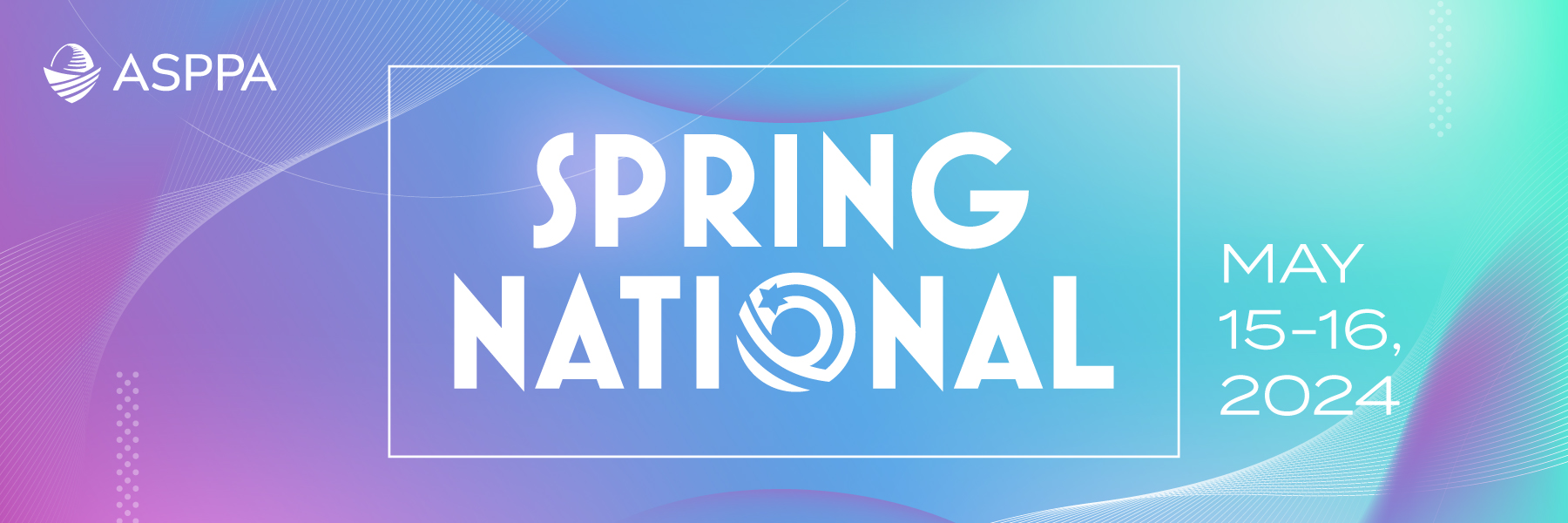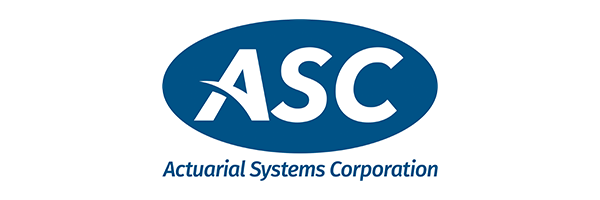
SECURE 2.0 is here! Can you keep up?
11:30 a.m.-12:30 p.m. ET
GS1: SECURE 2.0 Update (again)
In this session we will discuss provisions of SECURE 2.0 that are relevant for 2024 as well as discuss provisions that we have recently received guidance on!
During this session we will focus:
• Tax credits for small employers and the SAVERS credit.
• The new Family Attribution Rule Updates
• Update to Top Heavy Provisions for Otherwise Excludable Employees
• Roth Employer Contributions
• SIMPLE to 401(k) Safe Harbor Mid-year conversions
Speaker: Kizzy M. Gaul J.D., CPC, TGPC Director, Retirement Benefits Advisory & Compliance, WTW
12:40-1:30p.m. ET
Concurrent Workshops
Attendees will leave this session with an understanding of:
• ADP Testing Options
• Who is/isn’t an HCE?
• Compensation Options
• Correction Ordering Rules
• Timing of Correction
Speaker: Theresa Conti APR, QKA®, ERPA, CPFA Senior Consultant, July Business Services
WS2: Cash Balance Plans - Practical Topics for Practitioners
We understand the opportunity of large contributions for key personnel that make this plan design attractive but have many questions on the practical matters of administering the plan each year. This session will take on those topics and provide a greater understanding of the non-actuarial points of administration including:
• Why is a Cash Balance Plan operated in combination with a 401(k) Plan and how are the employer contributions to the 401(k) Plan affected.
• Flow of communication between the TPA and Consulting Actuary for calculation of the contributions and preparation and filing of the Form 5500 series return.
• Deduction Limitations and Non-Discrimination Testing
• How does the investment return affect the calculation of the contribution to the Cash Balance Plan.
Speaker: Norm Levinrad, Chief Actuary, EGPS
1:40-2:30p.m. ET
Concurrent Workshops
WS3: EPCRS Expansion – Helping Plan Sponsors Stay Compliant
WS4: “Strictly Automatic” (SECURE 2.0’s Automatic Enrollment Mandate)
This session will navigate the mandatory automatic enrollment provisions enacted with SECURE 2.0. Attendees will hear which plans or employers are exempt from mandatory automatic enrollment and which plans are ‘grandfathered’ (not required to use automatic enrollment). This session will also define applicable plan adoption and effective dates that will exempt plan sponsors from the mandatory provisions. Also featured within this session will be which type of automatic contribution arrangement is required, the available tax credit, and details about required auto. escalation and whether a minimum automatic contribution rate may be used, to avoid the escalation provision. This session will also detail how missed automatic deferrals may be corrected.
Speakers: Shannon Edwards ERPA, CPC, QPA, QKC®, QKA®, President, TriStar Pension Consulting
Mickie Murphy, ERPA, CPC, QPA, QKC, President, Blue Benefits Consulting, Inc
2:50-3:40 p.m. ET
Concurrent Workshops
WS5: We Have an Emergency! Case Studies on Emergency Distributions
Congress understands that emergency savings are not sufficient for many individuals. As such, Congress, through the SECURE 2.0 Act, has enacted additional options to make it easier for participants to receive money from their retirement accounts in the event of emergency. These options are in addition to the already allowable participant loan and hardship withdrawal provisions. With this influx of rules all at once, it’s hard not to confuse all of the new legislative provisions. This session will clarify all the options.
This session will discuss:
• Loans
• Hardship Withdrawals
• Emergency – Section 115 of the SECURE 2.0 Act
• Emergency Savings (PLESA) – Section 127 of the SECURE 2.0 Act
• Qualified Disaster Distributions – Section 331 of the SECURE 2.0 Act
• Terminal Illness Distributions – Section 326 of the SECURE 2.0 Act
After this session, participants will be able to:
• Identify all of the newly allowed emergency distribution options enacted by the SECURE 2.0 Act.
• Understand the emergency distribution options in detail.
• Help clients administer the provisions and to avoid errors.
Speaker: David Schultz APM, Attorney, FIS
WS6: Plan Terminations and Freezes
Don’t get left in the cold! In this session we will be diving into Mergers, Spinoffs, and Plan terminations. This session will include case studies and discuss the pros and cons of plan freezes in the DC world.
Speaker: Kelsey Mayo J.D., Partner, Poyner Spruill
3:50-4:40 p.m. ET
GS2: Ethics
Speaker: Bob Kaplan, CFP, CPC™, QPA™, QKC®, QKA®, Director of Technical Education, American Retirement Association
Peer-to-peer Roundtable Discussions
Join other TPAs to share perspectives and concerns and help each other figure out how to navigate in this exciting—and challenging new landscape. Don’t miss this chance to cover a lot of useful ground in a casual give-and-take that will also help you reinforce current relationships and make new connections.
(continuing education credit not available)
11-:30 a.m.-12:20 p.m. ET
GS3: Long-Term Part-Time (LTPT) – It’s 2024!
It's here – the challenge of implementing the requirement to permit LTPTs to make salary deferral contributions to an employer’s 401(k) Plan as of 1/1/2024. SECURE 1.0 brought forth the concept of LTPT and before it could even be implemented, SECURE 2.0 changed the rules. Adding to the concern was that no guidance was provided on topic until late November, 2023.
This session will cover:
• Which PT Employees qualify as LTPTs and former LTPTs
• Crediting service for participation and vesting
• Employer contributions and Nondiscrimination Testing
• Correction procedures if an LTPT is not offered the opportunity to make salary deferral contributions.
• Plan Document Requirements
12:30-1:20 p.m. ET
Concurrent Workshops
WS7: Eligibility: Back to the Basics
If you are new to the industry, or just want a nice refresher, this session will dive into plan eligibility! We will cover eligibility options for plan design and review how to figure eligibility with each option including elapsed time, hourly, special exclusions, and break in service rules. Have your thinking caps on as we will be going through real life examples.
Speaker: Karen Roberts, CEBS, QKA®, TGPC, Director, Client Consulting, CBIZ
WS8: “This Takeover is Not Hostile"
This session will highlight challenges to data collection during the onboarding of new clients, as well as appropriate timing to make those data requests. What data should be requested from the plan sponsor and how can the new provider work with other parties to obtain much of this information? Is different information required when changing providers for a cash balance plan? How can one determine when market value adjustments may be a factor?
Best practices include assembling a data collection checklist and letters of instruction for these “takeover” plans, to streamline the process.
In addition, this session will address:
• Information to be collected as a result of legislation enacted since 2019 (records about long-term part-time employees, prior QBAD’s, CARES distributions and loans, RMD history, in-place elections to receive employer contributions on a Roth basis, emergency distributions, and PLESA accounts)
• Collecting historical information about certain distributions, loans and Roth basis will continue, and information requests will be expanded as more providers conform their systems to SECURE 2.0.
Speaker: Erin Patton ERPA, CPC, QPA, QKA® Retirement Plan Consultant and Administrator, Striegel Knobloch & Company, LLC
1:30-2:20 p.m. ET
Concurrent Workshops
WS9: Keys to the 401(k) Kingdom: a SECURE Approach
This session will provide an in-depth look at the implications of SECURE on top heavy testing, and the strategies to ensure compliance. Attendees will learn about the latest guidance and regulations related to top heavy testing, including changes. The session will cover best practices for communicating changes, as well as practical strategies for plan design and administration.
Attendees will leave this session with an understanding of:
• Top heavy testing before/after SECURE
• Communication of changes to plan sponsors
• Plan design strategies due to SECURE changes
Speaker: Corey Zeller MSEA, CPC, QPA, QKA®, Enrolled Actuary, Preferred Pension Planning Corporation
WS10: Updates on Forms 5500, 5558, and 8868
This session will discuss:
• The new Schedule DCG for Defined Contribution Group (DCG) reporting options
• The new Schedule MEP for Multiple-Employer Plans
• The new participant counting methodology for determining type of filer.
• The new administrative expenses transparency changes.
• The new compliance questions added to Schedule R.
Colleen Windham, CPA, CPC, TGPC, QPA, QKA®, Relationship Manager, Retirement Plan Solutions, Inc.
Paul Protos, Co-Founder and Co-Owner, ATR, Inc
Join us as host Robert Richter and a panel of industry experts answer your questions that were not addressed during the conference. We want to make sure you have the answers you need to help your clients by providing insights, perspective and solutions. Submit your questions here.
Moderator: Robert Richter, J.D., LL.M., Retirement Education Counsel, American Retirement Association
Registration Rates (Registration Closes 5/14/24) |
|
*Member |
$499 |
Non-member |
$610 |
*Current ASPPA and ASEA members qualify for this discounted event ticket price.
Need CE credits? We’ve Got You Covered!
ASPPA Members
The 2024 ASPPA Spring National is designed to offer 10 hours of ASPPA CE credit. Additional hours can be earned by viewing recordings and completing a quiz related to program content.
Enrolled Agents (JBEA)
Pending
Accountants (NASBA):
ASPPA is not an approved provider through NASBA for online education. No CPE credit will be available.
Enrolled Retirement Plan Agents (ERPA Credit)
Attendees can earn up to 10 IRS Approved ERPA CE credits by attending conference sessions, including 1 IRS Approved Ethics CE by attending general session 2.
ASPPA cannot accommodate third-party CE requests for this virtual event.
Will the event sessions be recorded?
Yes, the sessions will be recorded. All registrants will have access to the recordings after the virtual live event has concluded. You’ll also have access to the session handouts. Your conference registration includes free access to all available recordings.
Engage on Your Terms
Whether you enjoy following X (formerly Twitter), Facebook or LinkedIn, the ASPPA Spring National website provides a list of all the social and mobile options available. From photo sharing to suggested hashtags, there are plenty of opportunities for you to connect and engage during the conference — when you and how you wish.
Confirmation
You will receive an email confirmation of your registration from ASPPA. If you have not received a confirmation within 10 business days after registering, please contact the Accounting Department at [email protected]. Details of how to join the virtual event will be provided to all registered attendees shortly and recordings will become available post-event for those who are not able to join live.
Cancellation
Submit all requests to [email protected] by May 14, 2024. A refund of the conference fee, minus a $100 processing fee, will be issued for cancellations received by that date. No refunds will be granted for requests received after May 14, 2024. Please note that refunds will not be given for no-shows.
Substitution
Substitution of registrations is permitted prior to the conference. Only one substitution is permitted per original registrant. The individual submitting the substitution request is responsible for updating any contact information.
Program Content
The views and opinions expressed by speakers or others who have provided materials to and for this conference are not necessarily those of ARA, ASPPA or its affiliate organizations. ARA, ASPPA and its affiliate organizations assume no responsibility for, nor endorses any of the comments, recommendations or materials that are provided.
Questions? We’re here to help!
Our customer care team is standing by to answer all your questions from the technology, CE credits, to the structure of the agenda! Feel free to connect with us at [email protected].
Time Zone
ASPPA Spring National is a virtual event based out of Arlington, VA. The event follows Eastern Daylight Time.






